| ________________
CM . . .
. Volume XV Number 22. . . .June 26, 2009 
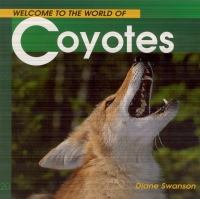 |
Welcome to the World of Coyotes.
Diane Swanson.
North Vancouver, BC: Whitecap Books, 2001.
28 pp., pbk., $6.95.
ISBN 978-1-55285-258-3.
Subject Heading:
Coyotes-Juvenile literature.
Grades 2-5 / Ages 7-10.
Review by Margaret Snow.
***½ /4
|
| |
|
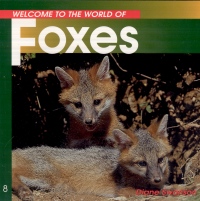 |
Welcome to the World of Foxes.
Diane Swanson.
North Vancouver, BC: Walrus Books/Whitecap Books, 1998.
28 pp., pbk., $6.95.
ISBN 978-1-55110-705-9.
Subject Heading:
Foxes-North America-Juvenile literature.
Grades 2-5 / Ages 7-10.
Review by Margaret Snow.
***½ /4
|
| |
|
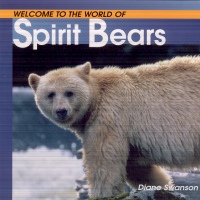 |
Welcome to the World of Spirit Bears.
Diane Swanson.
North Vancouver, BC: Walrus Books/Whitecap Books, 2007.
28 pp., pbk., $6.95.
ISBN 978-1-55285-847-9.
Subject Heading:
Kermode bear-Juvenile literature.
Grades 2-5 / Ages 7-10.
Review by Margaret Snow.
***½ /4
|
| |
|
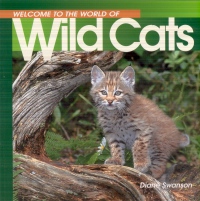 |
Welcome to the World of Wild Cats.
Diane Swanson.
North Vancouver, BC: Whitecap Books, 1997.
28 pp., pbk., $6.95.
ISBN 978-1-55110-615-1.
Subject Headings:
Pumas-Juvenile literature.
Lynx-Juvenile literature.
Bobcat-Juvenile literature.
Grades 2-5 / Ages 7-10.
Review by Margaret Snow.
***½ /4
|
| |
|
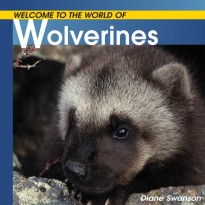 |
Welcome to the World of Wolverines.
Diane Swanson.
North Vancouver, BC: Walrus Books/Whitecap Books, 2007.
28 pp., pbk., $6.95.
ISBN 978-1-55285-840-0.
Subject Heading:
Wolverine-Juvenile literature.
Grades 2-5 / Ages 7-10.
Review by Margaret Snow.
***½ /4
|
| |
|
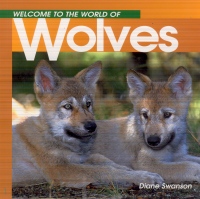 |
Welcome to the World of Wolves.
Diane Swanson.
North Vancouver, BC: Walrus Books/Whitecap Books, 1996.
28 pp., pbk., $6.95.
ISBN 978-1-55110-491-1.
Subject Heading:
Wolves-Juvenile literature.
Grades 2-5 / Ages 7-10.
Review by Margaret Snow.
***½ /4
|
| |
|

excerpt:
PRAIRIE WOLF, BRUSH WOLF, LITTLE WOLF - all names people call the coyote. It's a wild dog with a bushy tail and a pointed face, but the coyote is no wolf.
Bigger than a fox and smaller than a wolf, a good-sized coyote weighs about as much as a little Dalmatian dog. Males are usually larger than females, and coyotes that live in cities - where there's plenty of food - grow heavier than those in the country.
The colour of the coat varies with the coyote. The fur is often a mixture of gray, tan, and white, but it can also include black. Some coyotes have coats that are mostly reddish or yellow-brown. During winter they are normally lighter in colour.
It's lucky that the coyote has keen senses. This helps it find food and escape enemies. A coyote's eyes can spot small movements among the trees or in long grass. Its ears can hear the rustling of tiny feet beneath blankets of snow. And its nose can sniff a hiding rabbit - or an approaching mountain lion.
To chase down food or outrun danger, the coyote depends on a body built for speed. Its long legs are well designed for racing, and its tail provides balance. Held out to one side, it helps the coyote make sudden sharp turns while running. No wonder coyotes can survive 8 years. Some live to be 10 or more." (From Welcome to the World of Coyotes.)
This review features six carnivore-focused books by the noted Lethbridge, AB, born and raised nature author, Diane Swanson. To date, Swanson has shared her wealth of knowledge in more than 70 books and 500 magazine articles and has been nominated for and/or won numerous awards and nominations for most of her titles. Swanson currently resides in Victoria, BC.
The "Welcome to the World of..." series of books has been a mainstay in many school libraries because of its utility in facilitating primary and early junior students in creating projects and for its ease in being read independently for personal interest. The series is easy to read with each book having seven chapters that contain rich vocabulary and numerous colourful photographs which further explain the concepts conveyed in print. The font chosen is large enough to make it easy to read and not intimidating, but it is small enough so it doesn't have a "beginner" look to it. Text boxes and "Fast Fact" boxes are interspersed throughout enhancing again comprehension of the written word. Each book culminates with an index.
The seven key chapters in the carnivore related volumes are entitled "World of Difference" (general information), "Where in the World" (location), "World Full of Food or Hunter" (diet), "World of Words" (communication in the species), "New World" (breeding, birth and babies), "Small World" (adolescence) and "Fun World" (play). This approach enables beginning researchers to find information quickly, organize their thoughts, and classify them into a graphic organizer before writing their own sentences to explain what they have learned for a project work.
In addition to the basic format found in the seven chapters in Welcome to the World of Coyotes, one learns about coyotes not only mastering survival skills in the wild due to their speed and ability to adapt, but also that they are able to modify their lives to conform to living in cities.
Welcome to the World of Foxes covers the above standard topics, as well as showing the similarities between foxes and cats. One also learns that while foxes cannot swim, they are so cunning that they will board a log to "sail" to nearby islands. Many foxes are skilled enough to cross busy city streets.
Additional information one might discover in Welcome to the World of Spirit Bears includes the fact that spirit bears are either black bears that are white or black bears capable of having a white offspring. The fact that only one in 10 will actually produce a white cub is explained by a Pacific Coast Native legend about Raven wanting people to remember the ice and snow year round so he turned every tenth bear white. Raven then gave these ghostly creatures rainforest in isolated areas so they could live in peace.
Welcome to the World of Wild Cats showcases the three main North American species - lynx, bobcat & mountain lion. One reads of the similarities of wild cats compared to "domestic" cats that have become feral. Their ancestor, the sabre tooth tiger, is also introduced.
Welcome to the World of Wolverines discusses the incredible range of this species - one was radio tracked to have gone more than 412 kilometres in a week and have climbed altitudes of up to 2150 metres above sea level. These animals have a fierce reputation. They are capable of tearing through the walls of hunters' sheds to find shelter from a storm and can carry off prey three times their size across rivers and down slopes.
In Welcome to the World of Wolves, although feared by most animals, wolves have so much compassion they will rear an orphaned pup along with their own family. As with all of these animals, the greatest enemy is people.
The wealth of information and action-packed flow of the books create a readability that would certainly motivate children to finish reading the books to find out all they could about each of these Canadian animals.
Highly Recommended.
Margaret Snow is a teacher-librarian and literacy teacher in a small, rural school in Southwestern Ontario.

To comment
on this title or this review, send mail to cm@umanitoba.ca.
Copyright © the Manitoba Library Association. Reproduction for personal
use is permitted only if this copyright notice is maintained. Any
other reproduction is prohibited without permission.
NEXT REVIEW |
TABLE OF CONTENTS FOR THIS ISSUE
- June 26, 2009.
AUTHORS |
TITLES |
MEDIA REVIEWS |
PROFILES |
BACK ISSUES |
SEARCH |
CMARCHIVE |
HOME |





